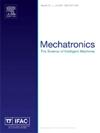Learning-driven sensorless interaction force estimation for low-cost robot arm with limited dynamic features
IF 3.1
3区 计算机科学
Q2 AUTOMATION & CONTROL SYSTEMS
引用次数: 0
Abstract
Precise measurement of the interaction force between the robot and its environment benefits the decision-making processes in various robotic applications. Compared with sensor-based methods, sensorless approaches are commonly preferred due to their versatility and cost-effectiveness. This paper introduces a learning-based method that leverages the state-of-the-art transformer to accurately estimate the interaction force. In contrast to other estimation methods relying on accurate robot dynamic parameters, state information or image features, a notable innovation of our work is the utilization of the limited set of features. The elaborate feature set only includes the joint angle, velocity, and driven torque, with the omission of joint acceleration—a basic robot state typically employed in other research. This configuration expands the feasibility of the presented approach to low-cost robots which are solely equipped with encoders in each joint, and to scenarios where the collection of clear and unobstructed visual features are challenging. Another distinctive feature of our work is that both soft and stiff objects during interaction are considered. Results from the experiment demonstrate that, in comparison to previous image-based methods, our framework achieves an equivalent or even superior level of accuracy across a broader spectrum of environments. Additionally, due to the elimination of joint acceleration from the feature set, the proposed framework sacrifices a small degree of accuracy compared with some non-image-based methods to broaden its applicability.
基于学习驱动的低成本机械臂无传感器交互力估计
精确测量机器人与环境之间的相互作用力有助于机器人在各种应用中的决策过程。与基于传感器的方法相比,无传感器方法由于其通用性和成本效益而普遍受到青睐。本文介绍了一种基于学习的方法,利用最先进的变压器来准确估计相互作用力。与其他依赖于精确的机器人动态参数、状态信息或图像特征的估计方法相比,我们的工作的一个显著创新是利用了有限的特征集。精心设计的特征集只包括关节角度、速度和驱动扭矩,而忽略了关节加速度——这是其他研究中通常采用的机器人基本状态。这种结构将所提出的方法的可行性扩展到每个关节仅配备编码器的低成本机器人,以及具有挑战性的清晰和无障碍视觉特征的收集场景。我们工作的另一个显著特点是在相互作用过程中同时考虑了软物体和硬物体。实验结果表明,与以前基于图像的方法相比,我们的框架在更广泛的环境中实现了同等甚至更高的精度水平。此外,由于从特征集中消除了关节加速度,与一些非基于图像的方法相比,所提出的框架牺牲了一定程度的精度,以扩大其适用性。
本文章由计算机程序翻译,如有差异,请以英文原文为准。
求助全文
约1分钟内获得全文
求助全文
来源期刊

Mechatronics
工程技术-工程:电子与电气
CiteScore
5.90
自引率
9.10%
发文量
0
审稿时长
109 days
期刊介绍:
Mechatronics is the synergistic combination of precision mechanical engineering, electronic control and systems thinking in the design of products and manufacturing processes. It relates to the design of systems, devices and products aimed at achieving an optimal balance between basic mechanical structure and its overall control. The purpose of this journal is to provide rapid publication of topical papers featuring practical developments in mechatronics. It will cover a wide range of application areas including consumer product design, instrumentation, manufacturing methods, computer integration and process and device control, and will attract a readership from across the industrial and academic research spectrum. Particular importance will be attached to aspects of innovation in mechatronics design philosophy which illustrate the benefits obtainable by an a priori integration of functionality with embedded microprocessor control. A major item will be the design of machines, devices and systems possessing a degree of computer based intelligence. The journal seeks to publish research progress in this field with an emphasis on the applied rather than the theoretical. It will also serve the dual role of bringing greater recognition to this important area of engineering.
 求助内容:
求助内容: 应助结果提醒方式:
应助结果提醒方式:


